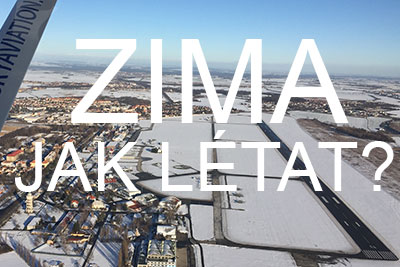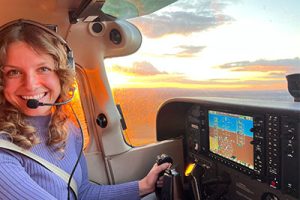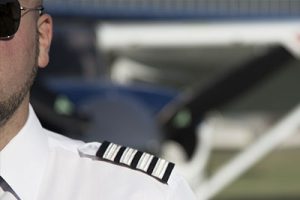With a more challenging time of year ahead in terms of meteorological conditions and operational considerations, it’s good to remember to approach flying differently than during the sunny summer months.
Probably the biggest challenges for pilots in the coming period will be low visibility, inversions, morning fog, low cloud base and of course icing.
1: WINTER PRE-FLIGHT PREPARATION
During pre-flight preparation, we should pay attention to temperature and dew point values, check the height of the zero isotherm (freezing level), and check synoptic charts – METAR, TAF, Significant WX, CHMI, Windy. Be prepared for more challenging navigation due to snow cover.
2: ICING
Frost usually forms at temperatures of +3 to -12 degrees, humidity is also a factor, so it is important to prepare for the flight takng into account the weather along the entire planned flight path.
Icing is most often encountered in clouds, fog, rain, drizzle or snow. Icing occurs on the surfaces of the aircraft positioned against the airflow. The most exposed parts of the aircraft are the leading edges of the wings and stabilizers. These areas should be carefully observed during flight, especially when passing through clouds where icing can be expected.
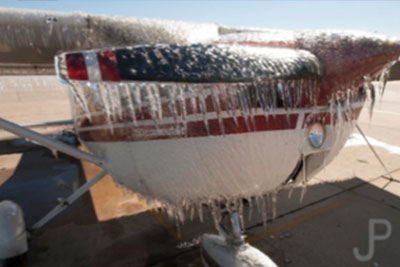
How to prevent and avoid icing?
Icing will only occur at a certain altitudes. We recommend that you monitor the outside temperature during the flight and remember at which altitude icing was not observed. If we get into icing and our aircraft is not equipped with de-icing equipment, we must get out of the cloud immediately. So we descend to lower levels or, in the case of a temperature inversion, above the upper limit of the cold air where the air is warmer and drier. The main precaution for small aircraft is to avoid flying in cloud when the temperature is below 0 degrees.
3: ENGINE START-UP IN WINTER
In winter, we can be caught off guard by a cold engine start, an aircraft covered in snow or ice, as well as runway contamination.
It wouldn’t hurt to review the procedures for engine start in different situations in the POH, start with external power source, a cold engine or even a fouled engine. It is necessary to review the aircraft anti-icing equipment and how to use it properly – carb.heat/pitot heat etc. Make sure the surfaces of your airplane are free of any icing (leading edges of wings, elevator, rudder…) Expect longer engine warm up times to operating temperatures.
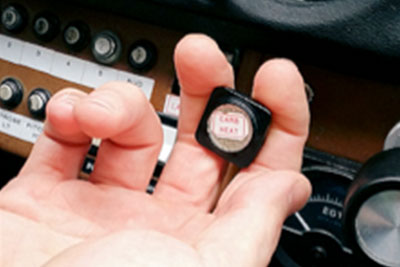
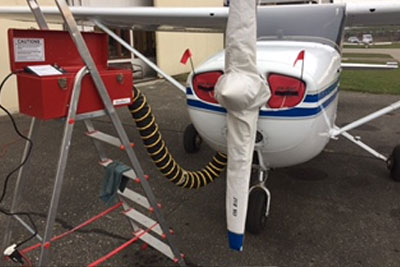
4: TAXI AND TAKE-OFF
If you are going to ride on a snow-covered surface, try not to use the brakes. Increasing the temperature of the brake disc can cause the brakes to freeze and the wheels to lock up on subsequent landings. A runway covered with snow degrades performance during take-off run! Do not stop the wheels after take-off and let them spin by inertia.
5: LANDING ON SNOW
On first landings in snow, pilots usually have difficulty estimating their altitude when the aircraft is on approach due to the solid white surface. It is therefore recommended that you first practice landing on snow with an instructor.
Landing in deep snow can damage the landing gear and, in worse cases, cause the aircraft to roll over. The lesser issue is the inability to depart back. We recommend that if you fly to an airport where you know there’s snow coverage, always check the condition of the runway with the operator. In winter the runway is often shortened due to snow cover.
6: SHORTER DAYLIGHT
Another factor that can complicate our flight is the shorter daylight hours. So, let’s take into account the limited time to conduct flights and check the TB/SR/SS/TE times. Use the AIP GEN 2.7 sunrise/sunset table to check for correct times and make sure to adjust times according to airport location!
However, a short day can be an advantage! The time is good for night training and night flying.
Presentation from the BLUE SKY AVIATION winter workshop on the specifics of winter flying


